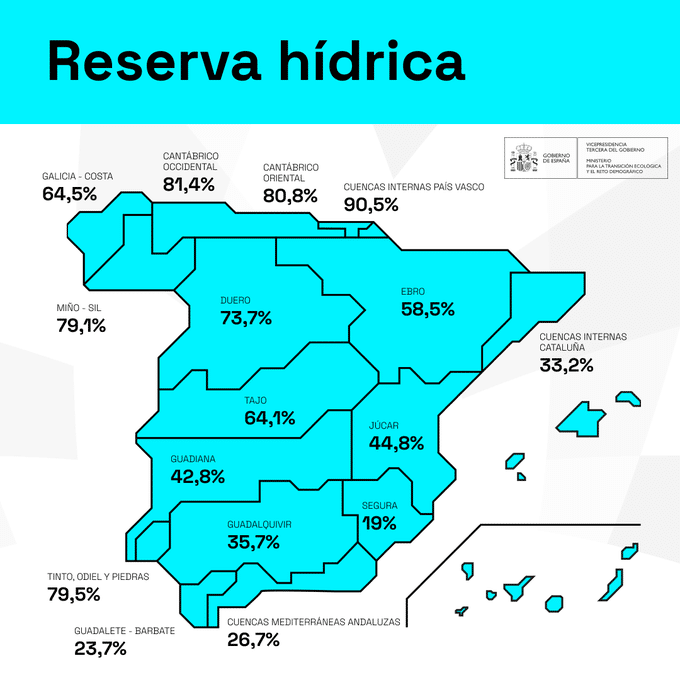Having tried to ignore the situation for the last two years, failing to take any precautionary or even advisory actions, the Segura Hydrographic Confederation (CHS) has finally declared a situation of extraordinary drought, which means new restrictions on agriculture.
This was announced on Tuesday by Mario Urrea, president of the CHS, after the meeting of the Permanent Drought Commission. The declaration corresponds to the UTE Principal, which covers the irrigators of the Vegas Alta, Media, and Baja del Segura.
Specifically, traditional irrigation systems will have a 35% reduction in water supply compared to the 20% that was active until now, while non-traditional irrigation systems will go from a restriction of 30% to 49%. It should be remembered that these measures had already been approved by the Dam Release Commission to deal with the drought situation in case it occurred, as has finally been the case.
The reservoirs in the Segura Basin have lost 12 cubic hectometres (hm3) above the CHS forecasts, which has forced this body to act to avoid extreme situations. The absence of rain and the heat typical of these dates cause the rate of emptying to increase, which has been accelerated this year, since in 2023 there were 40 more hm3 available than there are currently. The unnecessary and wasteful use of water also causes the reservoirs to empty.
To compensate for the restrictions on irrigation, the CHS has approved the opening of the Calasparra Syncline, which has a capacity of 31 hm3 of water. These wells are the only ones that can be used in the Region, since the Ministry has not given environmental approval to the rest of those that exist in the Community.
The CHS expects these measures to be published in the Official State Gazette (BOE) in the coming days, at which point irrigation restrictions will begin and wells will be put into operation. In addition, the river basin authority will notify each of those affected individually.
The territory of the Segura Hydrographic Confederation covers an area of 18,651 km², included in the provinces of Murcia, Alicante, Albacete, Almería, Jaén, and Granada.
According to Mario Urrea, the extraordinary drought situation is expected to last at least until the end of 2024, although everything is subject to change depending on the next rains.





